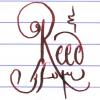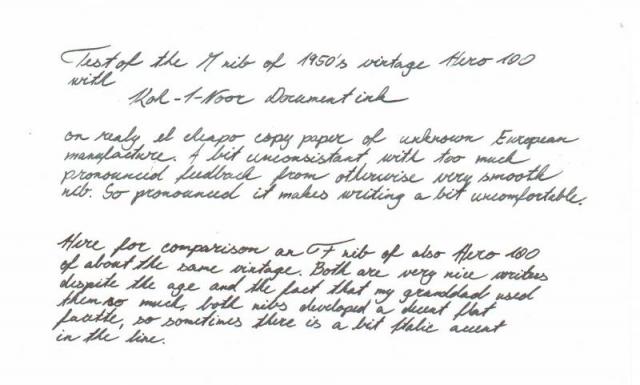Search the Community
Showing results for tags 'koh-i-noor'.
-
Koh-I-Noor Document Blue Thanks for @Lithium466 for the sample. This is one of the cheapest document inks, you could ever find. However, it stains, doesn’t like copy paper and it is a pain to clean. Though if you use it exclusively in one pen and don't use cheap paper, you'...
-
- 7 replies
-
- koh-i-noor
- document ink
-
(and 1 more)
Tagged with:
-
I recently purchased set of Variant(discontinued), Isograph and Rapidograph pens. All still working It got me thinking, how many people are still using these and which do you prefer the Isograph or Rapidograph?
- 12 replies
-
Do I Only Need To Buy The Koh-I-Noor Replacement Nib, Or...?
puck_saint posted a topic in Fountain & Dip Pens - First Stop
So, I inherited this set of rapidograph pens. I love them! I've never used anything like them before. But, at the size I like to ink at, the #3 (.8 mm, green band) is just a little too large sometimes, and the #2 (.6 mm, red band) a little too small. I found out about the #2.5 (.7 mm, light blue ban...- 3 replies
-
- rapidograph
- koh-i-noor
-
(and 1 more)
Tagged with:
-
Koh-I-Noor Hardtmuth is a famous manufacturer of (not only) writing, scribing and painting "tools" and accountrements of all kinds, with over 200 years of continuous history from former Austro-Hungarian Monarchy to current Czech Republic. Their sortiment is broad enoght to cover whole range from har...
- 2 replies
-
- koh-i-noor
- document ink
-
(and 5 more)
Tagged with:
-
I became re-interested in stylograph pens, prompted by the post: https://www.fountainpennetwork.com/forum/topic/306057-custom-stylographic-pens/ Photos attached are of my first attempt at using Koh-I-Noor nib assemblies to create stylograph type pens that would also accept Esterbrook nib assembl...
- 2 replies
-
- esterbrook
- rapidograph
-
(and 2 more)
Tagged with:
-
I use Rapidographs a lot in my art, and the old bottle of Koh-i-noor ink that I've been using with them is close to running out. It's not the greatest ink for my purposes--the shellac that makes it waterproof also makes everything shiny, which shows up on scanned images. It's also not as water-resis...
-
How Good Is This Mechanical Pencil? "koh-I-Noor Rapidograph"
patridam posted a topic in It Writes, But It Is Not A Fountain Pen ....
Hello, to be wholly honest I know literally nothing about fountain pens (and given my handwriting and tendency to write in all capitals, that might be for the best), but I am relatively interested in mechanical pencils and this was the first writing implement forum I came across. I am currently a...- 8 replies
-
- mechanical pencil
- 0.5 mm
-
(and 1 more)
Tagged with:
-
Sasha Royale, Hmm. What an interesting question—one I can answer only for my own experience creating www.TwelveDrawings.com Fountain pens are much more closely associated with writing than with drawing. In fact, I don't personally know any artists who use a fountain pen. I am pleased to find art...
- 5 replies
-
- phileas
- fountain pen
- (and 8 more)
-

Vintage Koh-I-Noor Rapidograph Technical Fountain Pens
Tadeusz posted a topic in Other Brands - Europe
Hello, As I was prowling the ebays for fountain pens, I came across a lot of 5 Koh-I-Noor Rapidograph Technical Fountain Pens. 4 of the pens (marked with a grey band and a 0 on the box) are unopened with a fifth pen marked 00 with a yellow band on the box. I have a general grasp on technical pens...







